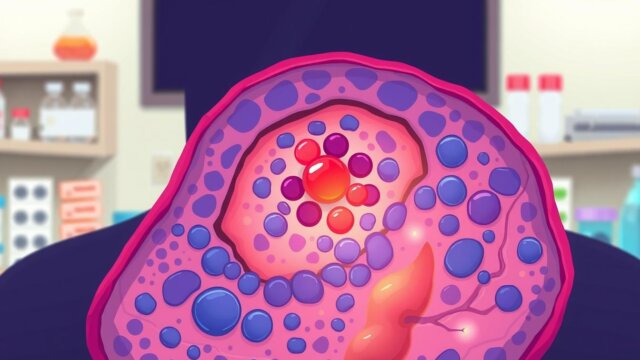FTC disclaimer: This post may contains affiliate links and we will be compensated if you click on a link and make a purchase.
Did you know that over 164 million work hours are lost each year due to dental issues in the US? This makes toothaches a big problem. There are some great home remedies that might help you feel better. You can try saltwater rinses or use some natural pain relief. These can ease your pain until a dentist can see you.
Good home remedies for a toothache include saltwater rinsing, using a cold compress, and applying clove oil. You can also take over-the-counter pain relievers or use certain teas and spices. Things like garlic, hydrogen peroxide rinse, and vanilla extract might also help. If the pain keeps up or gets worse, it’s very important to visit a dentist.
Some other natural options to look into are guava leaves, wheatgrass, and the toothache plant. But remember, if the pain doesn’t go away, you need to see a dentist. They can find out what’s really wrong and how to treat it.
Key Takeaways
- Saltwater rinses, cold compresses, and clove oil can provide temporary relief for toothache pain.
- Over-the-counter pain relievers like ibuprofen and acetaminophen can help manage minor tooth discomfort.
- Natural remedies such as garlic, peppermint, and hydrogen peroxide may also offer some toothache relief.
- Maintaining good oral hygiene habits and visiting the dentist regularly can help prevent future toothaches.
- If the toothache persists or worsens, it’s important to see a dentist to address the underlying issue.
Saltwater Rinse: A Simple and Effective Home Remedy
Do you know that many find saltwater rinses great for handling toothaches? It’s because salt water is a natural cleaner. It can also shake loose bits of food stuck between teeth. Not just that, rinsing with salt water can lower swelling and heal sores in the mouth. The recipe is easy: mix 1/2 teaspoon of salt into a glass of warm water. Then, use it like regular mouthwash. It’s safe and can be done a few times daily to ease slight tooth pain.
How to Make a Saltwater Solution
Want to make a saltwater rinse? It’s as simple as adding 1/2 teaspoon of salt to warm water. This mix works as a mouthwash. Gargle it in your mouth, then spit it out.
Benefits of Saltwater Rinse for Toothache
Research shows that salt water mouth rinses are helpful in several ways. They can calm mouth ulcers and reduce mouth bacteria and plaque. Plus, they may cut down on smelly breath. After surgeries like getting wisdom teeth out, dentists advise saltwater rinses. They can speed up healing and cut swelling. And, salt water can even lessen the ache from a sore tooth by washing away germs.
When to Use a Saltwater Rinse
For quick toothache relief and to heal cuts in the mouth, try a 30-second swish of salt water. Using a salt rinse every day could stop gum disease and cavities. For small toothache problems, saltwater is a handy, natural fix.
Cold Compress: Relieving Pain and Swelling
A cold compress can help ease your pain, like if a bump causes a toothache. It makes your blood vessels smaller, which cuts pain. The cold also makes any swelling go down. Just put a towel-wrapped bag of ice on for 20 minutes, several times a day. The ice works to numb the ache and calm the swelling.
How to Apply a Cold Compress
For a cold compress, do this for tooth pain:
- Wrap some ice or cold peas in a wet towel.
- Place it on the cheek next to the sore tooth for 20 minutes.
- Do this every few hours to lower the pain and swelling.
Benefits of Cold Compress for Toothache
A cold compress for toothaches is great for a few reasons:
- It makes the pain dull by chilling the area.
- Lessens the puffiness and redness around the tooth.
- It helps the healing by bringing more blood to the place.
The cold from the compress makes your blood vessels smaller. This cuts the hurting and sharp pain from the tooth. It’s a quick way to feel better until you visit your dentist.
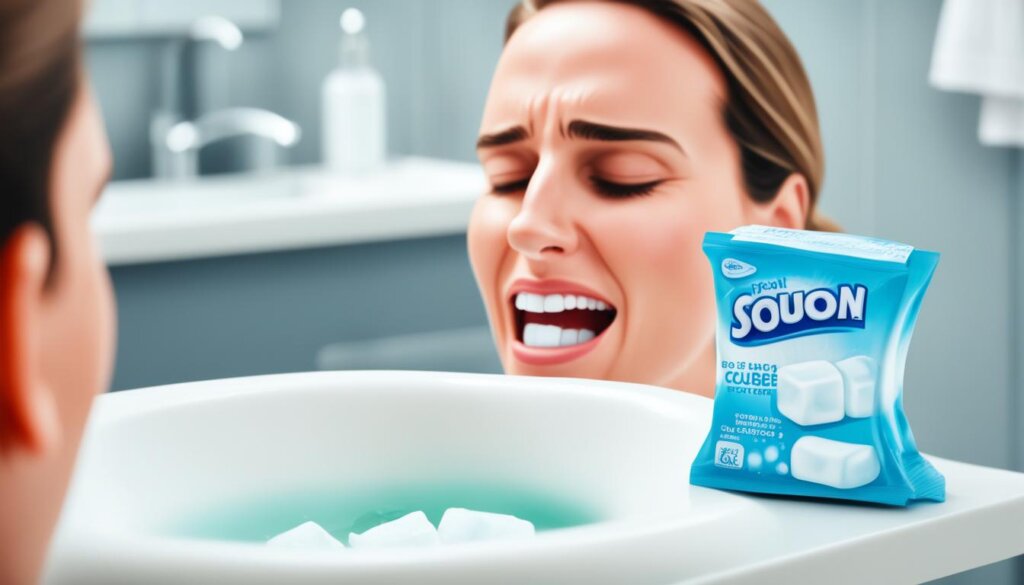
Clove Oil: A Natural Numbing Agent
Clove oil helps to numb pain and lower swelling in a tooth. It has eugenol, a natural germ killer. Mix clove oil with a natural oil like sunflower or jojoba. Use 15 drops of clove oil for every ounce of the other oil.
Put a bit of the mixture on a cotton ball. Apply it to the sore spot a few times daily. You can also mix a drop of clove oil into a small cup of water. Then, use it to rinse your mouth.
How to Use Clove Oil for Toothache Relief
Applying clove oil offers quick relief for a toothache. It starts working within 5 to 10 minutes, lasting 2-3 hours. Dilute the clove oil with a carrier oil. Use a ratio of about 2-3 drops of clove oil to 2-3 tablespoons of the carrier oil.
Precautions When Using Clove Oil
Using clove oil too often in your mouth can hurt your gums and teeth. It might also irritate skin and mucous membranes in the mouth. Chewing on dried cloves can cause pain, irritation, and hurt the teeth.
It’s risky for kids to consume clove oil. It could cause seizures, liver issues, or fluid problems. Pregnant women should not use it because it might harm the baby.
Always avoid swallowing clove oil. Plus, test a small area on your skin before using it in your mouth to check for allergies. For adults and teens, clove oil is usually okay to use for tooth pain short-term. But, it’s not safe for kids, as it could hurt the nerves growing in their teeth.
If clove oil irritates your mouth, put ice on the spot and see a dentist. For a reliable clove oil, try Nikura Clove Leaf Essential Oil. It’s pure and natural.

Over-the-Counter Pain Relievers: Temporary Relief
Over-the-counter (OTC) pain relievers can help for a while with toothaches. For kids, dentists often suggest using acetaminophen. And for grown-ups, ibuprofen, naproxen, or aspirin are ok to use. One study found that ibuprofen works better for toothaches.
But, you must be careful with how much you take. Make sure to read the directions and don’t take too much. Too many OTC pain meds can harm your liver, kidneys, or stomach. They could even cause you to hear ringing in your ears.
Safe Use of OTC Pain Relievers
If you’re using OTC pain meds for a toothache, seeing a dentist is really important. The FDA warns against using benzocaine in kids under 2. Still, a study with 576 people showed benzocaine can help with toothache pain when used right.
Types of OTC Pain Relievers for Toothache
New research says mixing Advil (ibuprofen) with Tylenol (acetaminophen) is as good as opioid painkillers for tooth pain. Dentists might tell you to try these OTC meds. They can help while you’re dealing with the main problem.
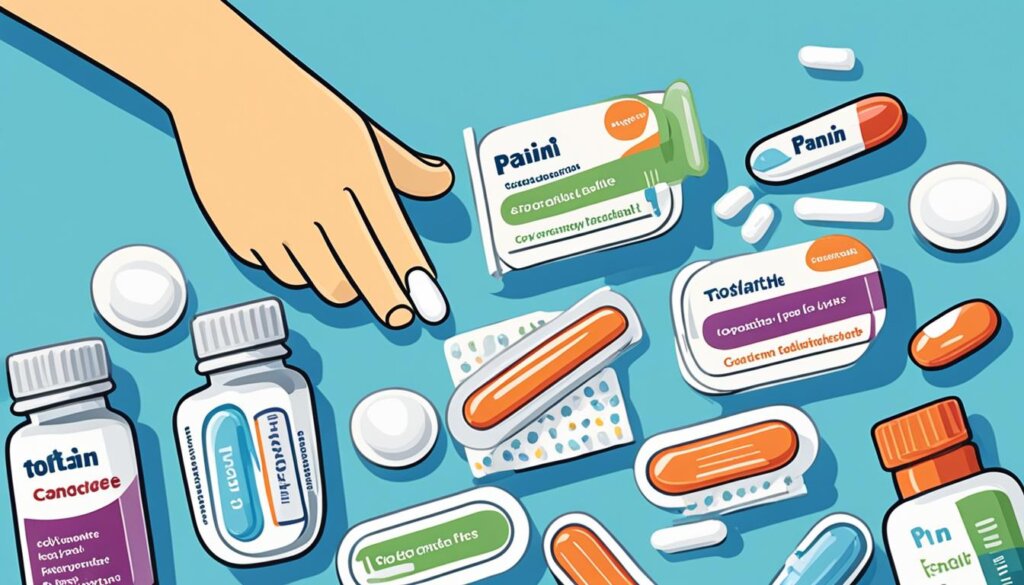
Peppermint Tea Bags for aching tooth
Peppermint tea bags help numb pain and calm sore gums. They contain menthol, a natural pain blocker. This can ease a toothache. By soaking a tea bag in hot water for 5 minutes, then applying it to the sore spot for 10–15 minutes, relief is often felt. The cool and tingly feeling peppermint brings can also help reduce swelling and fight germs. This is because up to 48% of peppermint oil is made of menthol, its main healing element.
Benefits of Peppermint for Toothache
Menthol in peppermint offers pain relief. This, combined with its ability to reduce swelling, makes it a great toothache fighter. In a study, a mix of zinc oxide and peppermint oil was better for kids’ dental work than zinc oxide alone. This shows a way peppermint oil can be really helpful.
How to Use Peppermint Tea Bags for Relief
First, let a used tea bag cool a little. Then press it softly against your achy tooth. Another way is to freeze the tea bag first for extra cold reflex. Steep the bag in hot water as mentioned earlier and apply. This can make a big difference in how much your tooth bothers you.
Peppermint tea bags are not the best for all tooth problems. They might not help if you have a cavity or sharp nerve pain. Also, they can make teeth look stained and there is caffeine to watch out for. Choosing a decaf tea might be better if you use this method often.

Garlic: A Natural Antibiotic and Pain Reliever
Garlic is well-known for its health benefits. It has been used for centuries. It’s great for the heart and boosts the immune system. For a toothache, crush a garlic clove into paste. Put it right on the spot. Or, chew a fresh clove slowly. Allicin in garlic fights germs and lowers pain. This makes it perfect for toothache woes. Using fresh garlic works best because it has more allicin.
How to Use Garlic for Toothache Relief
Garlic can fight bad bacteria and ease swelling. Its key part, allicin, is made when you crush or cut fresh garlic. But garlic powder doesn’t have allicin, so it’s not good for toothaches.
Precautions When Using Garlic
Eating garlic raw might cause bloating or bad smells. It could upset your stomach, too. And it might give you heartburn. Using garlic against toothaches can lead to burning. It might even inflame. Watch out for allergies, bad breath, and stomach issues. Be careful not to use too much garlic or push it deep into your tooth. Don’t use it if you’re allergic. And don’t use it for too long. A little garlic goes a long way.
Garlic can help with a toothache for a bit. But, don’t skip the dentist. Professional care is key, even if home remedies work for a while. If your pain or swelling doesn’t go away, see a dentist right away. Dental issues shouldn’t be ignored.
Hydrogen Peroxide Rinse: Killing Bacteria and Reducing Inflammation
A hydrogen peroxide rinse can help with toothaches. It kills bacteria and lessens plaque. Plaque can make gums sore and teeth hurt. Mix 3% hydrogen peroxide with water to make a mouthwash. Don’t swallow it. It disinfects and lowers swelling, giving time off from the pain.
How to Prepare a Hydrogen Peroxide Rinse
Making a rinse is easy. Mix 3% hydrogen peroxide and water. Swish it in your mouth but don’t swallow. Do this a few times daily for a break from tooth pain.
Benefits of Hydrogen Peroxide for Toothache
Hydrogen peroxide fights oral bacteria and inflammation, making it a good home remedy. A 6% mix can kill half the bacteria in 15 seconds of rinse. This means it can reduce swelling and pain from a toothache.
It’s best to use 3% hydrogen peroxide from stores at home. High-concentrate types need special permission. The common solutions are safe and good for toothaches.
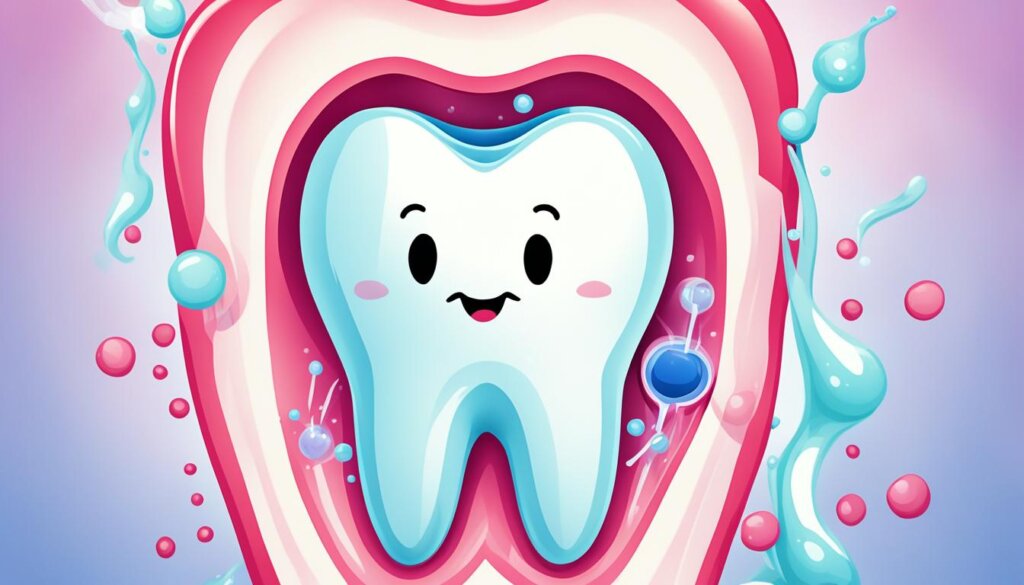
Vanilla Extract: A Sweet Solution for Pain Relief
Are you looking for a simple, tasty way to ease your toothache? Try vanilla extract. It contains alcohol to dull the pain. Plus, it has antioxidants to help you heal.
How to Use Vanilla Extract for Toothache
Here’s how to use it. Put a bit of vanilla extract on your sore tooth or gum. Do this a few times each day. The alcohol eases the pain, while the antioxidants support healing.
Benefits of Vanilla Extract for Oral Health
Vanilla extract can do more than just numb your pain. It’s good for your whole mouth. The antioxidants in it fight off swelling and bacteria. This helps keep your gums and teeth healthy.
This extract is an easy, sweet-tasting home remedy. It won’t solve the problem forever, but it can help when your tooth aches. Having it at home is a smart move for tooth emergency.
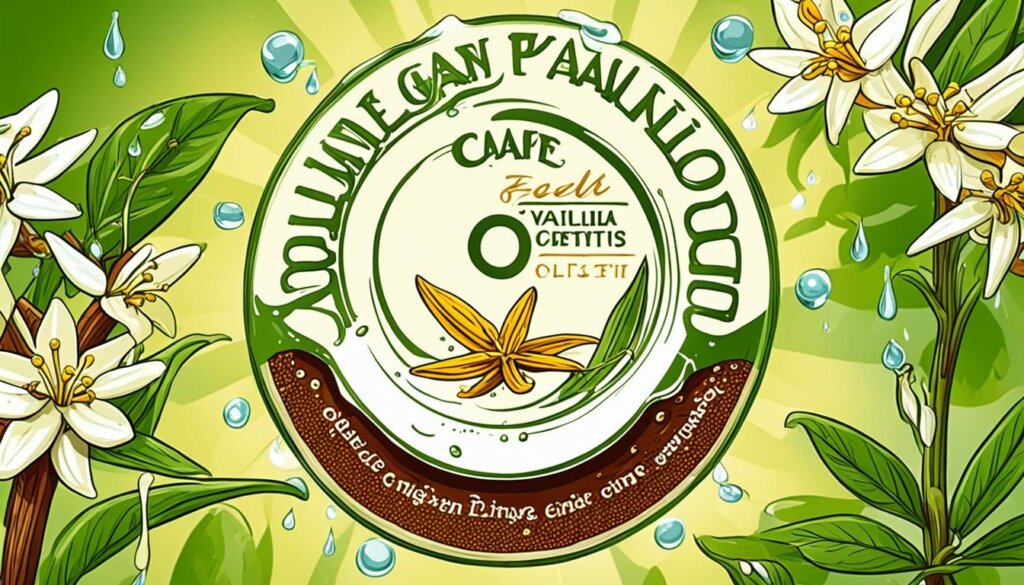
Natural Remedies: Exploring Alternative Options
Aside from common home fixes, other natural options might help ease a toothache. Guava leaves calm gum swelling and can heal. Chewing these leaves or making a mouth rinse can be good. Wheatgrass also helps by fighting bacteria and cutting down on swelling.
Guava Leaves
People have long used guava leaves for tooth pain. They fight swelling and ease pain with special compounds. You can chew the leaves or make a mouthwash from them.
Wheatgrass
Wheatgrass is packed with good stuff that can help a toothache. It fights germs and eases swelling. Drink its juice or use it in a smoothie. Swishing it in your mouth can also help.
Toothache Plant
The toothache plant may soothe tooth pain for a bit. It has a numbing and swelling-fighting compound. Chew its leaves or put a bit of the extract on the sore spot.
These natural choices might work for toothaches. Always be careful and stop if you feel worse. Head to a dentist if the pain doesn’t go away.

When to See a Dentist
If your tooth hurts for a day or two, see a dentist. Serious signs like hard pain, fever, or problems breathing need urgent dental care. These can show a big problem that must be treated immediately. A dentist can find out what’s wrong and give the right treatment.
Signs of a Dental Emergency
If you can’t stand the pain or have swelling and fever, it’s time to see a dentist quickly. Other signs, like bad taste or hard time eating can also mean a dental emergency.
Potential Causes of Toothache
Toothaches come from many things like cavities or gum diseases. When your tooth’s root is exposed or you grind your teeth, they can also hurt. A dentist can find the cause and stop the pain.

Prevention is Key: Maintaining Good Oral Hygiene
The best way to avoid toothaches is by keeping your mouth clean. Brushing your teeth for two minutes, twice a day, and flossing helps a lot. It takes out food and plaque. These can cause tooth decay and gum disease – leading to toothaches. Be careful with what you eat and drink too.
Some things like citrus, bread, sour candies, and soft drinks make plaque more likely. They can also make your teeth more sensitive. Focusing on a healthy diet can help keep toothaches away. Seeing your dentist regularly is a good idea. They can find and fix problems before they turn into painful toothaches.
Brushing and Flossing Techniques
Knowing how to brush and floss right is crucial for a happy mouth. Clean your teeth with a toothbrush and floss every day. This prevents plaque and food from causing harm. Correctly brushing and flossing lowers your chance of getting toothaches.
Dietary Considerations for Oral Health
What you eat affects your teeth and how likely you are to get toothaches. Foods like citrus, bread, sour candies, and fizzy drinks can make plaque and tooth pain worse. Eating a balanced diet that’s good for your teeth can stop toothaches from starting.
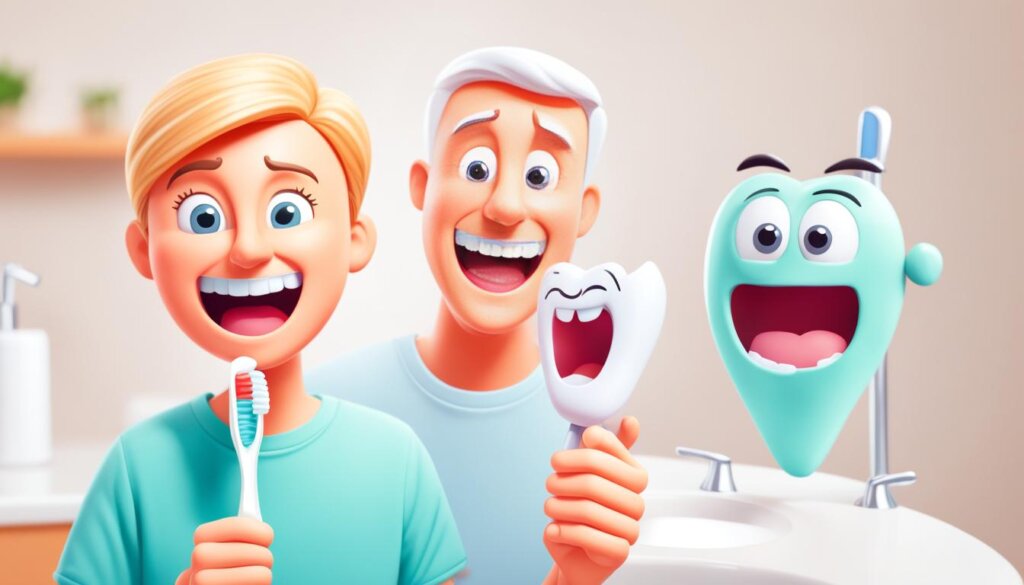
Conclusion
Toothaches can be very tough to deal with. Yet, you can try some home remedies for relief before you see a dentist.
Saltwater rinses, cold packs, clove oil, and over-the-counter pain drugs are good for this. You can also use natural things like peppermint and garlic to help. But remember, if the pain doesn’t go away or gets worse, you should go see a dentist. They can find out the real problem and stop it from getting worse.
It’s also very important to take good care of your teeth all the time. This means brushing and flossing every day. And being careful about what you eat.
Doing these things can lower your chances of getting a toothache. If you want to know more about at-home toothache fixes, click here. It’s also good to know how to manage toothache pain at home and why seeing a dentist is so important. These tips can keep your mouth healthy and deal with tooth pain the right way.







